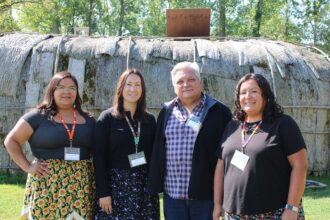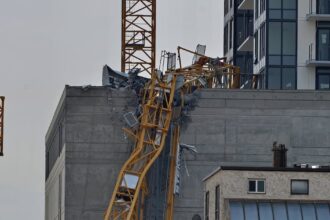The rolling foothills of Alberta’s eastern slopes erupted with protest yesterday as hundreds of ranchers, Indigenous leaders, and environmental activists converged on the provincial legislature in Edmonton, marking the largest demonstration against coal mining in the province’s history. The protest comes in response to Premier Danielle Smith’s controversial decision to revive coal exploration permits in the Rockies, reversing protections established after the bitter public battles of 2020-2021.
“They promised us—looked us right in the eye and promised—that these mountains would remain untouched,” said fourth-generation rancher Thomas McAllister, whose family has raised cattle in the Oldman River watershed for over a century. “Now they’re selling out our water, our livelihoods, and our children’s future for short-term profits that will line the pockets of foreign companies.”
The UCP government’s new “Responsible Resource Development Strategy,” unveiled last month, reopens approximately 420,000 hectares of previously protected mountainous terrain to open-pit coal mining. The areas in question contain the headwaters for major river systems that supply drinking water to over two million Albertans and irrigation for the province’s agricultural heartland.
According to internal documents obtained through freedom of information requests by the Alberta Wilderness Association, government officials acknowledged significant concerns about selenium contamination—a toxic byproduct of coal mining that has devastated waterways and fish populations in neighboring British Columbia’s Elk Valley.
“The science hasn’t changed,” explained Dr. Melanie Carson, hydrologist at the University of Calgary. “These are extremely sensitive watersheds. Once selenium enters the water system, it bioaccumulates up the food chain and can persist for decades, even centuries.”
Indigenous leaders from Treaty 7 Nations played a prominent role in the demonstration, highlighting that many proposed mining sites overlap with unceded territories and traditional hunting grounds. “This isn’t just about water—though that’s sacred too—it’s about the government’s continued pattern of making decisions about our lands without proper consultation,” said Chief Robert Crowfoot of the Siksika Nation.
The economic arguments for coal development have also faced scrutiny. While the UCP government projects the creation of approximately 1,500 jobs, independent economic analysis from the Canadian Centre for Policy Alternatives suggests these gains would be largely offset by losses in agriculture, tourism, and recreation sectors that depend on clean water and pristine landscapes.
Former Conservative cabinet minister Jim Bradley, who now heads the Eastern Slopes Protection Coalition, expressed frustration with his own party’s direction. “This isn’t about left versus right politics. This is about protecting Alberta’s water security and the sustainable industries that have defined our province for generations.”
The protests come at a politically sensitive time for Premier Smith, who faces declining approval ratings and growing divisions within her caucus over resource development priorities. Internal polling obtained by CO24 Politics indicates that 67% of Albertans, including many traditional UCP supporters, oppose new coal development in the Rockies.
Minister of Environment and Protected Areas Rebecca Schulz defended the government’s approach, stating: “We believe we can develop these resources responsibly while protecting water quality and the environment. The regulatory framework we’ve established is among the most stringent in North America.”
However, former provincial environmental scientists have disputed this claim, pointing to staffing cuts within regulatory agencies and the removal of independent monitoring requirements. Dr. William Donahue, former chief environmental monitoring officer for Alberta, called the current regulatory system “woefully inadequate” to handle the scale and complexity of the proposed mining operations.
As protesters dispersed in the late afternoon, organizers promised this demonstration was merely the opening salvo in what they expect to be a prolonged battle. A coalition of ranchers, Indigenous communities, and environmental groups has already filed for judicial review of the new mining permits, arguing the government failed to adequately consult affected stakeholders.
As Alberta stands at this crossroads between resource extraction and environmental protection, the fundamental question remains: can a province so defined by its natural resources find a balance that preserves the very landscapes and watersheds that sustain its people, or will short-term economic pressures once again trump long-term ecological concerns?










